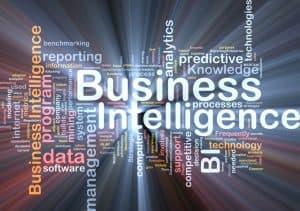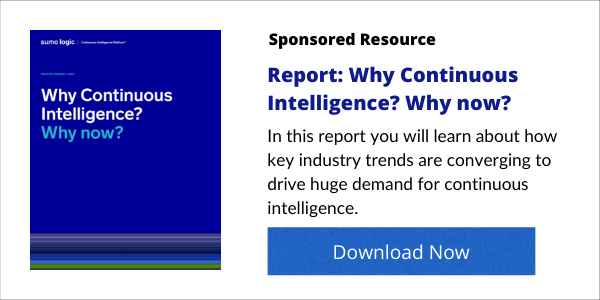
Business intelligence continues to evolve as developers incorporate the latest technology into their platforms, such as real-time analytics, natural language processing, AI, and machine learning.
Business intelligence (BI) has transformed businesses, allowing them to gain insights and make decisions in real-time. Consider this simple example. The baker arrives at the shop on a Monday morning. It’s time to prepare ingredients and dough ahead of time for the items that will be baked and sold that day or week. Does the baker randomly guess how many cakes, cupcakes, or other items to make? No, he or she makes a product based on how many orders are already in and how many orders might be expected to come in a given experience. Whether the data is held in the baker’s mind, written in a notebook, or housed in a computer database, this is still business intelligence in action.
See also: Business Intelligence: 3 Reasons Why Traditional BI Failed
Business intelligence has come a long way, baby
The term “business intelligence” was first coined in 1865 by historian Richard Miller Devens’ in his work, Cyclopaedia of Commercial and Business Anecdotes. Devens used the term to describe how an English banker gained profit by receiving and acting upon information about his environment before his competitors. It wasn’t until 1958 that IBM computer scientist Hans Peter Luhn described the potential of gathering business intelligence through the use of technology. By 1968, individuals with extremely specialized skills could translate data into usable information by storing data in silos which produced fragmented, disjointed reports that were open to interpretation.
Download Report: Why Continuous Intelligence? Why Now?Two years later, Edgar Codd proposed a “relational database model,” which was eventually adopted worldwide. The 1980s saw the advent of data warehouses, which are systems used for data analysis and reporting. At that time, there were two basic functions of BI: producing data and reports and organizing and visualizing it in a presentable way.
In the early 2000s, newer BI tools offered new functionality that allowed businesspeople to gather data and gain insights more easily. Today, we are bombarded with information, and BI has become an indispensable tool in strategic decision-making.
Managers can determine what products are selling, what time of day they are being purchased, and what items are being bought together.
Thanks to business intelligence, we can:
- Identify ways to increase profit.
- Analyze customer behavior.
- Compare data with competitors.
- Track performance.
- Optimize operations.
- Predict success.
- Spot market trends.
- Discover issues or problems.
Rising demand for BI
The demand is booming for BI, as evidenced by Kenneth Research’s Global Business Intelligence Market report, which projected the BI market to reach USD 147.19 billion by 2025. In addition, Reveal’s Trends in Software Development and Analytics 2021 survey of software developers and IT professionals found that tech companies saw a 41% increase in demand for business intelligence solutions last year.

Business Intelligence software is becoming a mainstream offering. More than a third of respondents to the Reveal survey (39%) said they increased their investment in data analytics tools and technology, and 41% saw an increase in customer requests for access to data and analytics. As the demand for the technology rises, so do new advancements – giving users the ability to analyze and make intelligent decisions without any programming knowledge.
One recent innovation in BI software is embedded analytics, which delivers real-time reporting, interactive data visualization, and/or advanced analytics, including machine learning, natural language processing (NLP), and augmented analytics, directly into an enterprise business application. The data is managed by an analytics platform, and the visualizations and reports are placed directly within the application user interface (UI) to improve the context and usability of the data for business users.
The most effective BI tools for business users allow anyone in a company to access, analyze, and act on data without coding experience. With the help of embedded analytics, which converts raw data into business intelligence, organizations are presented with tremendous opportunities – from increasing productivity and strengthening competitive advantage to improving customer satisfaction and other actionable insights. Take the example of the baker. Imagine a business intelligence dashboard delivering predictions on the number of cupcakes to bake based on historical data, the current weather, and the time of day. That is the power of business intelligence.
Today, business Intelligence software holds the key to unlocking the power of data. No longer merely a spreadsheet, BI platforms can be used to provide visualizations of cybersecurity threat patterns and manage workplace efficiency for global companies.
Real-world examples include Sensato, one of the top cybersecurity companies in the world, which integrates embedded analytics software into its Nightingale software. Striking BI visualizations and dashboards help security monitors visually see and interpret cyberthreats and attacks.
See Also: Continuous Intelligence Insights
Embedded BI is also used in Superstream’s cloud-based accounting software, the #1 enterprise resource planning (ERP) software in the Japanese market, which uses graphic presentations to help companies make informed business decisions based on the latest global data and financial consolidation. This intelligence is presented at the time of most impact – when the user needs it most – in the context of the normal workflow.
COVID-19 takes BI to a whole new level
Not only can enterprises gain a competitive advantage, but today’s BI is being used to save lives. The pandemic emphasized the importance of relying on data rather than hunches, as the world became dependent on COVID-19 visualizations to steer us out of the crisis. Government agencies and health experts are using big data analytics tools to understand, track, and reduce the spread of the virus. BI helps health experts identify vaccine supply chain issues, virus hotspots, COVID-19 rates, and more, all in real time.
Now that BI has emerged from business use into a household name, what does the future hold?
Business intelligence will continue to evolve as developers incorporate the latest technology into their platforms, such as real-time analytics, natural language processing, AI, and machine learning. The next-gen BI may change the way we determine trends, and ultimately, it may even be able to predict the future.
Download Report: Why Continuous Intelligence? Why Now?





